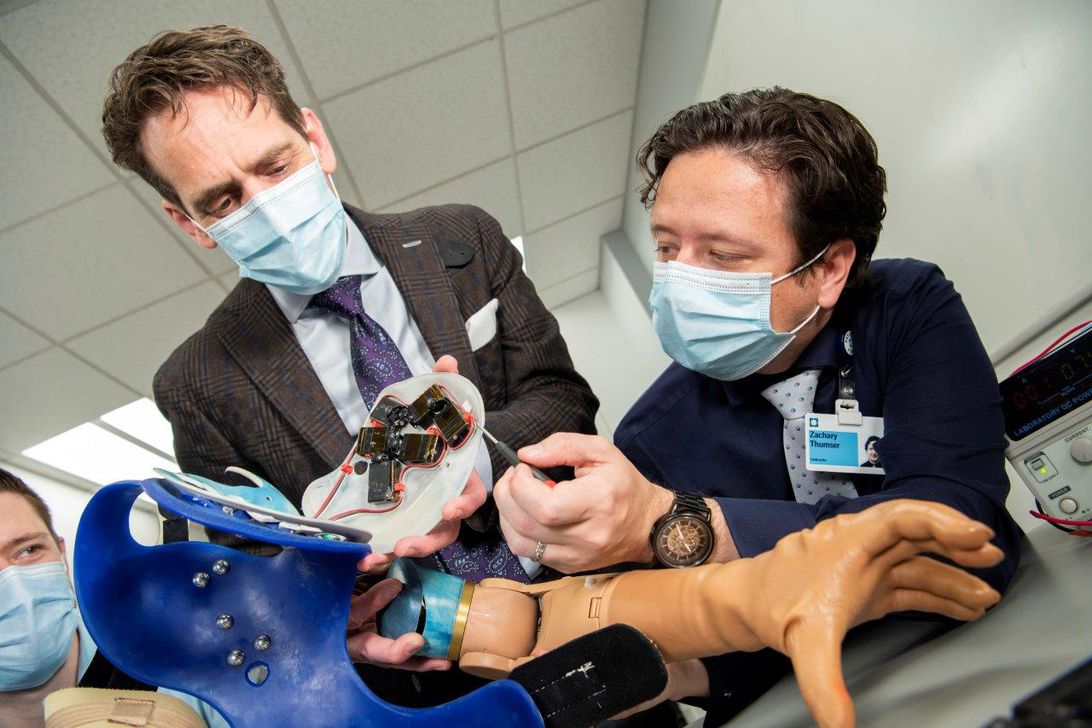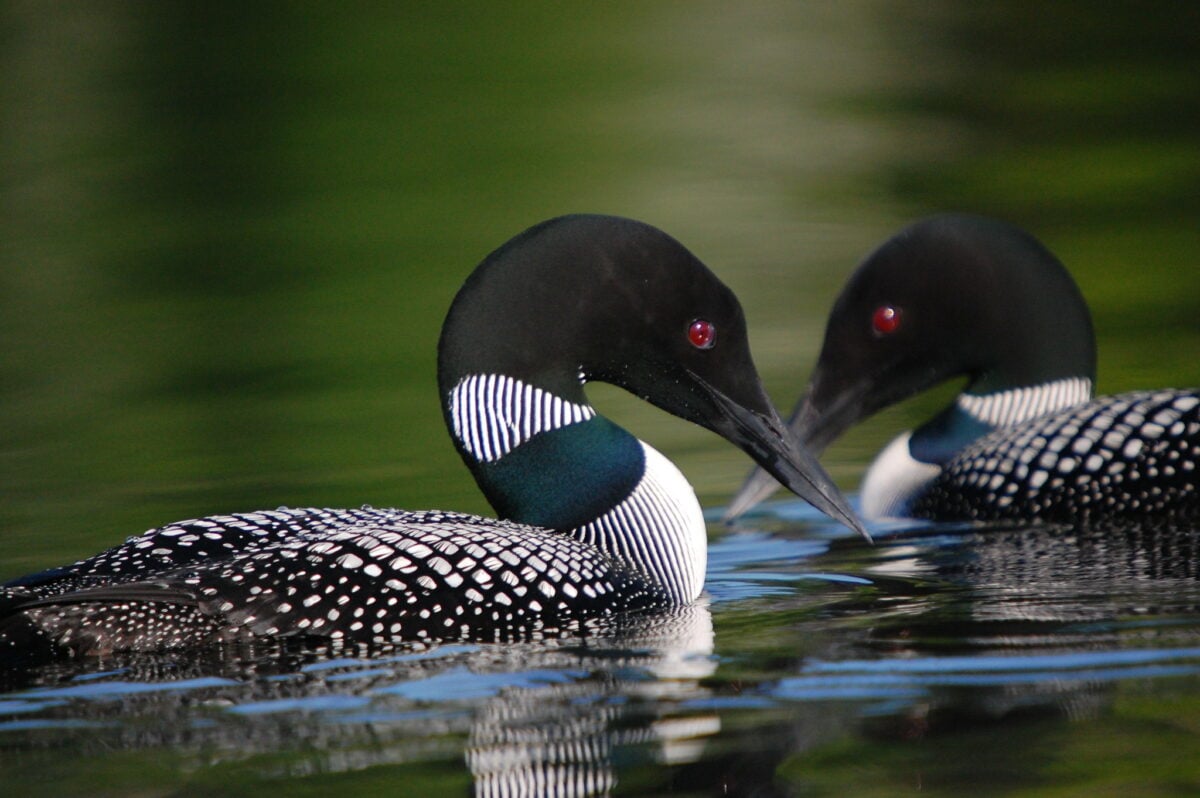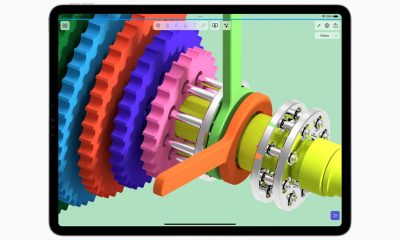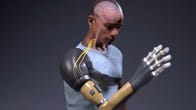Science
Futuristic bionic arm uses tiny robots to return natural reflexes to amputees – CNET

The research group at Cleveland Clinic’s Laboratory for Bionic Integration looks at the inside of the touch robot system. Each small black box provides individual finger sensation to the user through a neural-machine interface.
Cleveland Clinic
Dreaming of a future where Luke Skywalker’s replacement hand is more than a sci-fi fantasy, scientists have designed a “bionic arm” that enlists help from tiny robots to re-create the vital sensations forfeited when one loses an upper limb. The bots do that by safely vibrating muscles at the amputation site.
By 2028, the global prosthetics and orthotics market is expected to reach over $8 billion, according to a 2021 report from Grand View Research, but artificial limbs have hit a mechanical roadblock. They can’t really account for many intuitive sensations that help us in our everyday lives, such as the way it feels to open and close our hands.
A study subject tests the team’s bionic arm.
Cleveland Clinic
“We’re still using technology that kind of reached its zenith around World War II,” explained Paul Marasco, an associate professor in the Cleveland Clinic Lerner Research Institute’s Department of Biomedical Engineering and lead author of a study on the new bionic arm published Wednesday in the journal Science Robotics.
Enter the bionic arm, a hybrid of metal and realistic skin tones.
Though there are several other teams working on bionic arms, such as the groups behind popular cyberpunk video game Deus Ex and Metal Gear Solid, Marasco touts a few advantages of his version.
The sci-fi-looking device translates information directly to and from the brain via powerful robots about half the size of a standard matchbox. While turning thoughts into action, the arm can simultaneously contact the brain to deliver sensations corresponding to that intended action.
Not only does the artificial limb appear to be the first bionic arm to simultaneously test several metrics of its benefits over typical prosthetics, those metrics indicate that it replicates the mechanics of natural arms precisely enough to restore unconscious reflexes in amputees who use it.
We rely on such reflexes every day. For instance, when we pick up a cup of coffee, our hand finds the mug on the table, grips the handle with the right level of firmness and lets go at the perfect time to prevent spills. We can achieve this task thoughtlessly even on the groggiest of mornings because nerves in our arm muscles automatically respond to our choices — in this case, “I must drink that coffee.”
Traditional prosthetic limbs can’t re-create such seamless movement because they run in manual drive — amputees have to keep their eyes on them at all times and worry about things a nondisabled person usually chalks up to intuition.
After testing the device on two study subjects and using unprecedented analytic tools, the team was excited to discover that the subjects reverted back to reflexive behaviors from before their amputation, including intuitive grip and natural eye movements — they could focus their sight away from the limb.
The metallic arm requires three components: realignment of nerve endings, mini-robots that work as a sort of control center and the bionic arm itself.
First, a surgical procedure takes an amputee’s unused nerve endings within the healthy part of the arm — those that used to be dedicated to removed parts, such as fingertips — and “plugs” them into the site of amputation.
“Your brain is like, ‘My fingers are connected to a muscle,’ [it just doesn’t] know that it’s a muscle on your shoulder versus a muscle down in your forearm,” Marasco explained.
The bionic arm is placed onto the amputation site and little robots are fit into the socket. Those robots press on relevant areas of the site, stimulating the nerve endings that are now attached, when the patient engages the arm.
“You can buzz their muscles and generate these really kind of interesting things — these perceptual illusions of complex hand movement,” Marasco said.
The researchers modified off-the-shelf prosthetic limbs rather than starting from scratch, hoping to fast-track the devices to rehabilitation clinics and make them more cost-effective than traditional prosthetics. People who use those less advanced artificial limbs often overuse the side of their body without an amputation, leading to back or shoulder problems that ultimately require costly medical care.
“These advanced systems are more expensive to fit to start with, but if you use them, they don’t injure you, because you don’t have to account for them,” Marasco said. “This is going to be something that’s going to cost less money in the future.”
Science
SpaceX launch marks 300th successful booster landing – Phys.org


SpaceX sent up the 30th launch from the Space Coast for the year on the evening of April 23, a mission that also featured the company’s 300th successful booster recovery.
A Falcon 9 rocket carrying 23 of SpaceX’s Starlink internet satellites blasted off at 6:17 p.m. Eastern time from Cape Canaveral Space Force Station’s Space Launch Complex 40.
The first-stage booster set a milestone of the 300th time a Falcon 9 or Falcon Heavy booster made a successful recovery landing, and the 270th time SpaceX has reflown a booster.
This particular booster made its ninth trip to space, a resume that includes one human spaceflight, Crew-6. It made its latest recovery landing downrange on the droneship Just Read the Instructions in the Atlantic Ocean.
The company’s first successful booster recovery came in December 2015, and it has not had a failed booster landing since February 2021.
The current record holder for flights flew 11 days ago making its 20th trip off the launch pad.
SpaceX has been responsible for all but two of the launches this year from either Kennedy Space Center or Cape Canaveral with United Launch Alliance having launched the other two.
SpaceX could knock out more launches before the end of the month, putting the Space Coast on pace to hit more than 90 by the end of the year, but the rate of launches by SpaceX is also set to pick up for the remainder of the year with some turnaround times at the Cape’s SLC-40 coming in less than three days.
That could amp up frequency so the Space Coast could surpass 100 launches before the end of the year, with the majority coming from SpaceX. It hosted 72 launches in 2023.
More launches from ULA are on tap as well, though, including the May 6 launch atop an Atlas V rocket of the Boeing CST-100 Starliner with a pair of NASA astronauts to the International Space Station.
ULA is also preparing for the second launch ever of its new Vulcan Centaur rocket, which recently received its second Blue Origin BE-4 engine and is just waiting on the payload, Sierra Space’s Dream Chaser spacecraft, to make its way to the Space Coast.
Blue Origin has its own rocket it wants to launch this year as well, with New Glenn making its debut as early as September, according to SLD 45’s range manifest.
2024 Orlando Sentinel. Distributed by Tribune Content Agency, LLC.
Citation:
SpaceX launch marks 300th successful booster landing (2024, April 24)
retrieved 24 April 2024
from https://phys.org/news/2024-04-spacex-300th-successful-booster.html
This document is subject to copyright. Apart from any fair dealing for the purpose of private study or research, no
part may be reproduced without the written permission. The content is provided for information purposes only.
Science
Wildlife Wednesday: loons are suffering as water clarity diminishes – Canadian Geographic


The common loon, that icon of northern wilderness, is under threat from climate change due to declining water clarity. Published earlier this month in the journal Ecology, a study conducted by biologists from Chapman University and Rensselaer Polytechnic Institute in the U.S. has demonstrated the first clear evidence of an effect of climate change on this species whose distinct call is so tied to the soundscape of Canada’s lakes and wetlands.
Through the course of their research, the scientists found that July rainfall results in reduced July water clarify in loon territories in Northern Wisconsin. In turn, this makes it difficult for adult loons to find and capture their prey — mainly small fish — underwater, meaning they are unable to meet their chicks’ metabolic needs. Undernourished, the chicks face higher mortality rates. The consistent foraging techniques used by loons across their range means this impact is likely echoed wherever they are found — from Alaska to Canada to Iceland.
The researchers used Landsat imagery to find that there has been a 25-year consistent decline in water clarity, and during this period, body weights of adult loon and chicks alike have also declined. With July being the month of most rapid growth in young loons, the study also pinpointed water clarity in July as being the greatest predictor of loon body weight.
One explanation for why heavier rainfall leads to reduced water clarity is the rain might carry dissolved organic matter into lakes from adjacent streams and shoreline areas. Lawn fertilizers, pet waste and septic system leaks may also be to blame.
The researchers, led by Chapman University professor Walter Piper, hope to use these insights to further conservation efforts for this bird Piper describes as both “so beloved and so poorly understood.”
Return of the king
Science
Giant prehistoric salmon had tusk-like teeth for defence, building nests


|
|
The artwork and publicity materials showcasing a giant salmon that lived five million years ago were ready to go to promote a new exhibit, when the discovery of two fossilized skulls immediately changed what researchers knew about the fish.
Initial fossil discoveries of the 2.7-metre-long salmon in Oregon in the 1970s were incomplete and had led researchers to mistakenly suggest the fish had fang-like teeth.
It was dubbed the “sabre-toothed salmon” and became a kind of mascot for the Museum of Natural and Cultural History at the University of Oregon, says researcher Edward Davis.
But then came discovery of two skulls in 2014.
Davis, a member of the team that found the skulls, says it wasn’t until they got back to the lab that he realized the significance of the discovery that has led to the renaming of the fish in a new, peer-reviewed study.
“There were these two skulls staring at me with sideways teeth,” says Davis, an associate professor in the department of earth sciences at the university.
In that position, the tusk-like teeth could not have been used for biting, he says.
“That was definitely a surprising moment,” says Davis, who serves as director of the Condon Fossil Collection at the university’s Museum of Natural and Cultural History.
“I realized that all of the artwork and all of the publicity materials and bumper stickers and buttons and T-shirts we had just made two months prior, for the new exhibit, were all out of date,” he says with a laugh.
Davis is co-author of the new study in the journal PLOS One, which renames the giant fish the “spike-toothed salmon.”
It says the salmon used the tusk-like spikes for building nests to spawn, and as defence mechanisms against predators and other salmon.
The salmon lived about five million years ago at a time when Earth was transitioning from warmer to relatively cooler conditions, Davis says.
It’s hard to know exactly why the relatives of today’s sockeye went extinct, but Davis says the cooler conditions would have affected the productivity of the Pacific Ocean and the amount of rain feeding rivers that served as their spawning areas.
Another co-author, Brian Sidlauskas, says a fish the size of the spike-toothed salmon must have been targeted by predators such as killer whales or sharks.
“I like to think … it’s almost like a sledgehammer, these salmon swinging their head back and forth in order to fend off things that might want to feast on them,” he says.
Sidlauskas says analysis by the lead author of the paper, Kerin Claeson, found both male and female salmon had the “multi-functional” spike-tooth feature.
“That’s part of our reason for hypothesizing that this tooth is multi-functional … It could easily be for digging out nests,” he says.
“Think about how big the (nest) would have to be for an animal of this size, and then carving it out in what’s probably pretty shallow water; and so having an extra digging tool attached to your head could be really useful.”
Sidlauskas says the giant salmon help researchers understand the boundaries of what’s possible with the evolution of salmon, but they also capture the human imagination and a sense of wonder about what’s possible on Earth.
“I think it helps us value a little more what we do still have, or I hope that it does. That animal is no longer with us, but it is a product of the same biosphere that sustains us.”
This report by The Canadian Press was first published April 24, 2024.
Brenna Owen, The Canadian Press





-
Art24 hours ago
The unmissable events taking place during London’s Digital Art Week
-



 Politics19 hours ago
Politics19 hours agoOpinion: Fear the politicization of pensions, no matter the politician
-



 Politics18 hours ago
Politics18 hours agoPecker’s Trump Trial Testimony Is a Lesson in Power Politics
-



 Science18 hours ago
Science18 hours agoNASA Celebrates As 1977’s Voyager 1 Phones Home At Last
-
Business17 hours ago
Oil Firms Doubtful Trans Mountain Pipeline Will Start Full Service by May 1st
-
Media17 hours ago
B.C. puts online harms bill on hold after agreement with social media companies
-
Art19 hours ago
Turner Prize: Shortlisted artist showcases Scottish Sikh community
-
Media11 hours ago
B.C. online harms bill on hold after deal with social media firms





